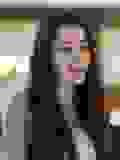
Six Questions with Ernestine Fu
Sep 15th, 2017 by Issuu
In anticipation of our upcoming Generators Summit, we wanted to let you get to know our speakers a little better. This time we sat down to chat with Ernestine Fu, angel investor and venture capitalist, to get her perspective on the intersection of technology and creativity.
Issuu: Tell us a bit about yourself and your background.
Ernestine: I was born and raised in LA, and then moved to the Bay Area for my undergraduate studies at Stanford. After completing my bachelors and masters in the engineering school, I enrolled in a PhD-MBA program on campus. At Stanford, I was very focused on research at the engineering school and also public service.
Although I started my career focused on engineering research and public service, I dove straight into venture capital. It’s difficult to ignore the pull of entrepreneurship at Stanford – your classmates constantly talk about starting companies in the dorm rooms, professors teach courses on how to scale startups, and walking around campus, you see buildings named after successful founders like Bill Gates (Microsoft) and Jerry Yang (Yahoo).
I was fortunate enough to meet, and be recruited by, the partners at a venture capital firm called Alsop Louie Partners during an event on campus. Their backgrounds in both the public and private sectors fascinated me – some had served in the military, others had started and led publicly-traded companies, and many had developed major federal initiatives around cybersecurity.
Fast forward six years, I’ve led and negotiated startup deals, structured term sheets, advised companies as their board director, supported founders on recruiting and business deals, raised money from limited partners and investors, and everything in between.
Outside of Alsop Louie, I have also personally invested in a number of startups and a few venture funds that friends have started. I’ve also had the opportunity to teach graduate-level courses at Stanford, blog about higher education and public policy, and even invest in a few restaurants. I’m grateful that the Bay Area welcomed me with open arms, and I now consider the Bay Area my home – sorry LA!

Issuu: For those who don’t know, what is an angel investor and what is a venture capitalist?
Ernestine: Angel investors and venture capitalists (VCs) invest money in small, early-stage companies – startups that are believed to have high-growth potential. Angel investors invest their own capital, while VCs manage and invest other people’s money through a fund. Both angel investors and VCs provide capital to startups in exchange for 1) ownership stake via equity or convertible debt, 2) control over company matters like information rights, board rights, liquidation preference etc. In addition to capital, these investors typically also provide important business advice and access to a network of contacts relevant to the startup.
Issuu: What has motivated you to focus your investments on innovative technology?
Ernestine: I love investing in deep-tech, disruptive technologies.
What attracts me is the challenge of assessing innovative R&D from the best labs, and then figuring out the right way to commercialize the technology – all while successfully scaling business and operations at the company.
I learn every day from investing in deep-tech companies. When I talk to a founder, who is usually a renowned scientist or PhD dropout creating cutting-edge research, it feels like I’m back in school and expanding my mind. Part of this interest stems from when I started my research and PhD, and focused on autonomous vehicles and creating a framework for evaluating and comparing autonomous vehicle systems.
After starting my research, I subsequently invested in two autonomous vehicle companies: Zoox, which develops an autonomous vehicle from the ground up with a unique design approach; and nuTonomy, which makes software to build autonomous vehicles and has already deployed a fleet of vehicles for testing in Singapore.

Issuu: Do you see a relationship between creativity and technology? How do those worlds collide?
Ernestine: We’ve seen an explosion of creativity from innovations in the technology space: we upload thousands of hours of videos every minute, we take more pictures in a day than our ancestors did in a year, and we’ve even created a entire new language through the use of emojis. While the excessive quantity of creative content generated today is not reflective of quality, I am optimistic about technology’s role in fostering creativity.
Creativity is about unleashing the right knowledge, skills and attitude that allow you to be a problem solver. It’s about finding new solutions to problems and creating value through new and interesting opportunities. It’s about having the right mindset in order to challenge assumptions and reframe problems and ideas.
Technology removes barriers to creative excellence. It also bridges time and distance that would otherwise separate us, further unlocking opportunities to nurture creativity. Consider, for example, when Charles Darwin and Gregor Mendel discovered the principles of natural selection and genetics. They remained unaware of each other’s work throughout the course of their lifetimes. If they had access to technology that allowed their work to be combined decades earlier, it’s exciting to imagine where our understanding of modern biology might be today.
Today, when creativity and technology converge, we see spectacular examples of problem solving in its truest form, as evidenced by companies like Google, Apple, Spotify and others.

Issuu: With your expertise in exciting technology, how do you think creatives will benefit from the new direction that publishing is taking?
Ernestine: I have a few thoughts on the future of publishing…
Greater Control:
Self publishing has allowed writers to control their craft from end to end. They’re the artisans and can control everything from content to sales and marketing.
Increased Access:
Social media companies like Facebook, Instagram and Snapchat are about aggregating content, telling a story around it, and then building their businesses on it. Creatives can access anyone, anything, anywhere. (Just avoid the fake news!)
Content is King:
Digital advertising can’t be the sole revenue stream for publishers. For example, adblocking isn’t sustainable long-term. I love that founder Evan Williams recently decided that the future of Medium doesn’t include advertising.
Gutenberg Revolution:
We learned about this from publishing’s beginnings, and we’re seeing it again today as publishing transitions from print to digital content and audio. VR/AR and holograms are the new mediums and opportunities for creatives.
The future of publishing looks bright for creatives!
Issuu: What is one piece of advice you have for up-and-comers that are building careers in the current technological climate?
Ernestine: Whom you work with is more important than where you work.
Thank you, Ernestine, for taking the time to chat with us! Want to learn more about Issuu, sign up today!
